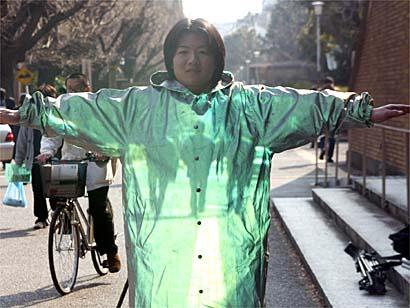So promise researchers whose research was published in the online edition of Science this weekend.
Avi Blizovsky

And if we're talking about nanotechnology and special materials, imagine a cloak that makes you see and don't look like the cloak that Harry Potter inherited from his father (and maybe he got it from our Danny Dean?). Researchers in the UK and the US believe they know how to do this. They announced a plan to develop exotic materials needed to sew the cloak.
The idea is to use artificial materials, which are not similar to those used at Hogwarts School of Witchcraft and Wizardry. These materials are designed to deflect light and other forms of electromagnetic radiation around an object, making it virtually invisible as if someone had punched a hole in space.
“Science fiction?, no. This is a theoretical possibility, but what prevents us from reaching it are the technological and engineering limitations," says John Pendry, a physicist at Imperial College London.
Details of the study, which Pendry co-authored, appeared last Thursday in the online version of the journal Science.
"This is a very interesting science and an interesting idea, and it relies on a broad mathematical and physical basis," said Nadar Angata, a professor of electrical and systems engineering at the University of Pennsylvania. Angata has conducted his own research in the field of invisibility using innovative materials called metamaterials.
Pendry and his colleagues suggested using metamaterials because they can be tuned to bend electromagnetic radiation—radio waves and visible light, for example—in any desired direction. A cloak composed of these materials, with a structure designed down to the sub-microscopic level, will neither reflect light nor create a shadow. Instead, like a river flowing around a smooth cliff, the light and other forms of electromagnetic radiation will hit the cloak and simply bypass it, continuing as if nothing had interfered and blocked their path. This will give the viewer from the outside the feeling of watching through the cloak, when everything inside disappears from sight.
It's possible to make someone invisible as long as they're wearing the jacket made of these materials, says Patanjali Parimi, a physicist at Northwestern University and an engineer at Chelton Microwave in Bolton, Massachusetts. Parimi was not involved in the research.
Such a cloak does not yet exist, but the first versions that can screen out microwaves and other forms of electromagnetic radiation will be out within 18 months, Pandry said. According to him, the research was an invitation to come and play with these newnesses. "We will have a cloak before long" he said. The research was supported by the Pentagon's Defense Advanced Research Projects Agency because the technology may have military applications.
While Harry Potter can put on the cloak to disguise himself at Hogwarts, the real world version might not be so comfortable to wear, it's possible that instead of a coat a shelter would be built from this material.
The connoisseur of technological futurism
https://www.hayadan.org.il/BuildaGate4/general2/data_card.php?Cat=~~~487456856~~~64&SiteName=hayadan
